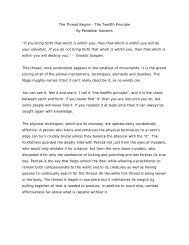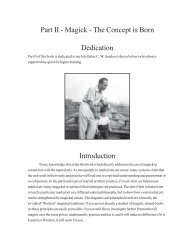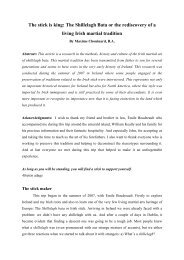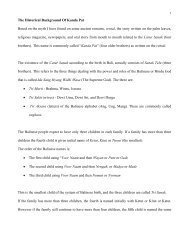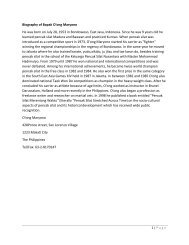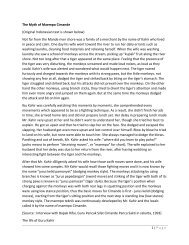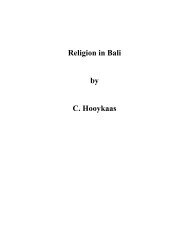Tenaga Dalam - Pukulan Cimande Pusaka
Tenaga Dalam - Pukulan Cimande Pusaka
Tenaga Dalam - Pukulan Cimande Pusaka
Create successful ePaper yourself
Turn your PDF publications into a flip-book with our unique Google optimized e-Paper software.
message carrying nerve, then comes face to face<br />
with each command nerve at the same instant.<br />
The real problem occurs in the space from one<br />
nerve to another. This nerve gap or synapse goes<br />
between the nerves, each have two fork looking<br />
pieces that face each other waiting for the<br />
message to connect them. When a command<br />
reaches the end of one nerve the nerve releases a<br />
certain fluid called acetylcholine which allows the<br />
command to transfer from one nerve to the other.<br />
Often a third nerve lies between the two<br />
mentioned nerves adding another two gaps for the<br />
message to have to cross. Now it takes longer,<br />
much longer for the message to be conveyed<br />
across the nerve gaps than for it to move through<br />
the nerve body itself. Actually it takes 40% as<br />
much time for it to fly across the gap as it does to<br />
travel through the entire nerve. Why you ask?<br />
Well the resistance it must endure is twelve times<br />
as high. This is because the nerve has to produce<br />
the substance we mentioned first before a<br />
transmission is possible. Also a nerve fiber<br />
actually does not fatigue, but the gap does. This is<br />
your obstacle to faster reflexes. You can also<br />
increase the speed by increasing the nerve<br />
electricity. Here is a great secret. When you<br />
actually get better at something and or increase<br />
your reaction time in that movement it means that<br />
when you engage in this activity the nerves from<br />
being so conditioned secrete the acetylcholine<br />
faster from the beginning than they did before.<br />
The confidence you now have allows you to be<br />
detached from the movement feeling more relaxed<br />
and contributes to more of the good substance<br />
being secreted and your skill growing even faster.<br />
Now when you are too involved mentally you can<br />
become nervous of the outcome, afraid, etc.<br />
When this occurs you secrete sympathin from<br />
your fighting nerves and no acetylcholine. So what<br />
does all of this mean to you? When you are faced<br />
with a challenge in your art fear and uncertainty<br />
can seize you and create the reverse effect we<br />
just spoke of causing you to become slow,<br />
uncoordinated and weak. Very soon after, though<br />
if you make a good response or move and regain<br />
some confidence your sympathin dries up slightly<br />
and you begin to improve. A satisfactory chain of<br />
events if you are just practicing but not acceptable<br />
in a life and death fight. The altered states that we<br />
practice in our art that is an animal trance (aware<br />
relaxation) allows the normal mind to shut off its<br />
doubting influence, accesses the basal ganglia<br />
putting us in touch with our ancient and effective<br />
survival responses, produces a high confidence<br />
level which allows the production of acetylcholine<br />
speeding up both our thought speed and physical<br />
reflexes and strength. These are facts. If you<br />
choose not to utilize this most important part of<br />
the art realize that science is on our side, not to<br />
mention hundreds of years of our ancestors art.<br />
Final Comments<br />
If you have comments, student questions, a<br />
possible article that you would like to submit or<br />
an article that you would like to see written please<br />
send them to:<br />
Chris Martin<br />
20000 Kingwood Drive<br />
Kingwood, Texas, USA 77339<br />
Chris.Martin@nhmccd.edu<br />
www.cimande.com<br />
24



